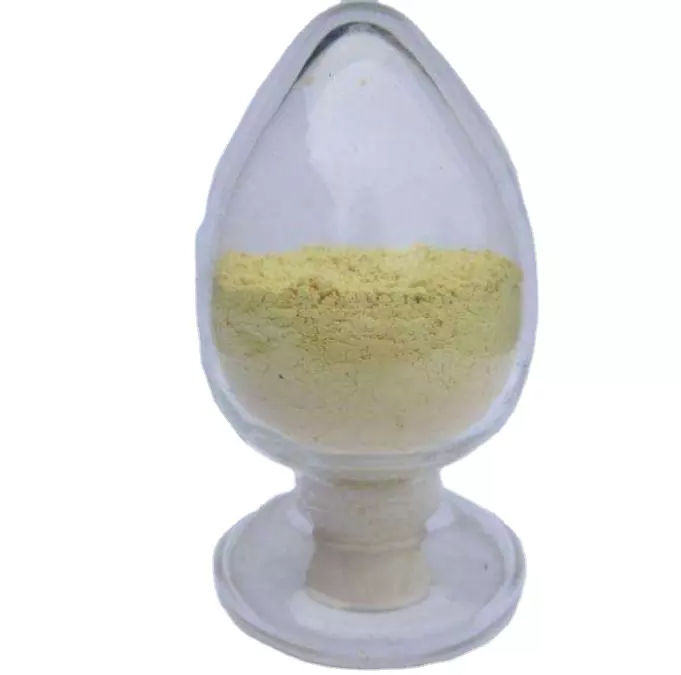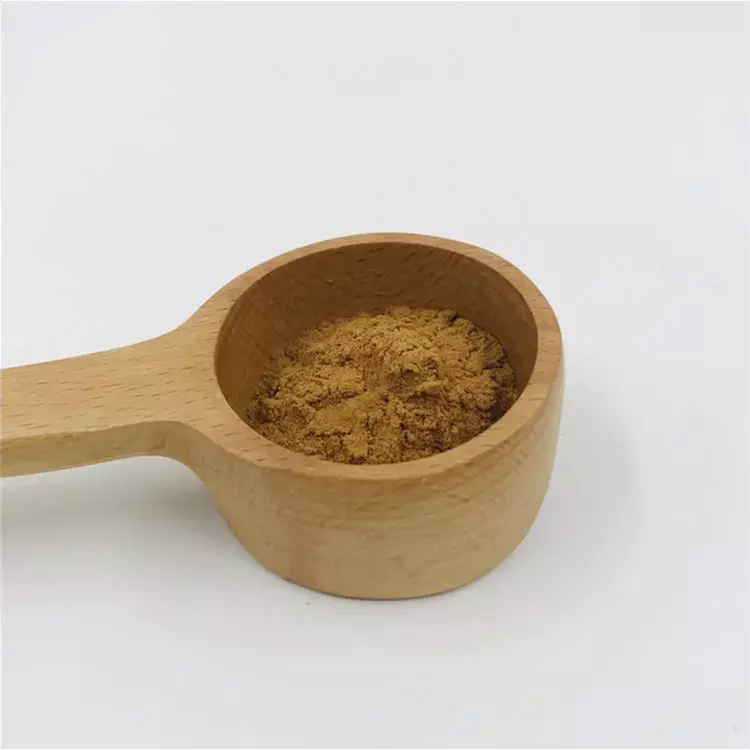N-CYANOACETYLURETHANE
Synonym(s):Ethyl cyanoacetylcarbamate
- CAS NO.:6629-04-5
- Empirical Formula: C6H8N2O3
- Molecular Weight: 156.14
- MDL number: MFCD00001937
- EINECS: 229-615-4
- SAFETY DATA SHEET (SDS)
- Update Date: 2025-09-22 14:50:28

What is N-CYANOACETYLURETHANE?
Chemical properties
Pale Yellow Solid
The Uses of N-CYANOACETYLURETHANE
N-Cyanoacetylurethane is used in the synthesis of inhibitors targetting the PDZ domain of PICK1, which is a potential target for brain ischemia, pain and addiction illnesses. Also it is used in the sy nthesis of cathespin K inhibitors.
The Uses of N-CYANOACETYLURETHANE
N-Cyanoacetylurethane is used in the synthesis of inhibitors targetting the PDZ domain of PICK1, which is a potential target for brain ischemia, pain and addiction illnesses. Also it is used in the synthesis of cathespin K inhibitors.
Properties of N-CYANOACETYLURETHANE
| Melting point: | 167-169 °C (lit.) |
| Boiling point: | 280.35°C (rough estimate) |
| Density | 1.197 |
| refractive index | 1.5010 (estimate) |
| storage temp. | 2-8°C |
| solubility | DMSO, Methanol |
| form | Solid |
| pka | 3.46±0.10(Predicted) |
| color | Pale Yellow |
| InChI | InChI=1S/C6H8N2O3/c1-2-11-6(10)8-5(9)3-4-7/h2-3H2,1H3,(H,8,9,10) |
Safety information for N-CYANOACETYLURETHANE
| Signal word | Warning |
| Pictogram(s) |
 Exclamation Mark Irritant GHS07 |
| GHS Hazard Statements |
H315:Skin corrosion/irritation H319:Serious eye damage/eye irritation H335:Specific target organ toxicity, single exposure;Respiratory tract irritation |
| Precautionary Statement Codes |
P261:Avoid breathing dust/fume/gas/mist/vapours/spray. P280:Wear protective gloves/protective clothing/eye protection/face protection. P301+P312:IF SWALLOWED: call a POISON CENTER or doctor/physician IF you feel unwell. P305+P351+P338:IF IN EYES: Rinse cautiously with water for several minutes. Remove contact lenses, if present and easy to do. Continuerinsing. |
Computed Descriptors for N-CYANOACETYLURETHANE
| InChIKey | HSOGVWWWGVFXGF-UHFFFAOYSA-N |
| SMILES | C(OCC)(=O)NC(CC#N)=O |
N-CYANOACETYLURETHANE manufacturer
RVR Labs Pvt Ltd
3Y
Phone:+91-9133227788
Whatsapp: +91-9912882943
product: 6629-04-5. N-Cyanoacetylurethane 98%
HESTUR PHARMA PRIVATE LIMITED
1Y
Phone:+919966969147
Whatsapp: +91-9966969147
product: 6629-04-5 >98%
New Products
Indole Methyl Resin tert-butyl 9-methoxy-3-azaspiro[5.5]undecane-3-carboxylate Boc-His(Boc)-OH 2-CTC Resin 4-Chloro-7-tosy1-7Hpyrrolo[2,3-d]pyrimidine 5,7-Dibromo-1H-indole 2,5-dichloro-N-hydroxy-4,6-dimethylpyridine-3-carboximidamide 2,2-Dimethoxy-7-azaspiro[3.5]nonane hydrochloride 4-chloromethyl-5-methyl-1,3-dioxol-2-one (DMDO-Cl) R-2-BENZYLOXY PROPIONIC ACID 1,1’-CARBONYLDIIMIDAZOLE 1,1’-CARBONYLDI (1,2-4 TRIAZOLE) N-METHYL INDAZOLE-3-CARBOXYLIC ACID 4-((2-hydroxyethyl)thio)benzoic acid 1-(TERT-BUTOXYCARBONYL)-2-PYRROLIDINONE Methyl 6-methylnicotinate 3-Pyridineacrylic acid tert-Butyl carbazate TETRAHYDRO-2H-PYRAN-3-OL 2-((4-morpholinophenylamino) (methylthio) methylene) malononitrile 3-(4-morpholinophenylamino)-5-amino-1H-pyrazole-4-carbonitrile 2,4-dihydroxybenzaldehyde 1,3-Diethyl-1,3-Diphenylurea Methyl 2-methylquinoline-6-carboxylateRelated products of tetrahydrofuran
![METHYL 3-((2-CYANO-3-[(ETHOXYCARBONYL)AMINO]-3-OXO-1-PROPENYL)AMINO)-2-THIOPHENECARBOXYLATE](https://img.chemicalbook.in/StructureFile/ChemBookStructure2/GIF/CB3335198.gif)
![ETHYL N-(2-CYANO-2-[2-(4-FLUOROPHENYL)HYDRAZONO]ACETYL)CARBAMATE](https://img.chemicalbook.in/StructureFile/ChemBookStructure3/GIF/CB3207846.gif)
![ETHYL N-[2-CYANO-3-(MORPHOLINOAMINO)ACRYLOYL]CARBAMATE](https://img.chemicalbook.in/StructureFile/ChemBookStructure2/GIF/CB9270097.gif)

![ETHYL N-[3-(3-CHLORO-4-([5-(TRIFLUOROMETHYL)-2-PYRIDINYL]OXY)ANILINO)-2-CYANOACRYLOYL]CARBAMATE](https://img.chemicalbook.in/StructureFile/ChemBookStructure3/GIF/CB6342616.gif)
![ETHYL N-[2-CYANO-3-(PIPERIDINOAMINO)ACRYLOYL]CARBAMATE](https://img.chemicalbook.in/StructureFile/ChemBookStructure2/GIF/CB6698564.gif)
![ETHYL N-(3-([(4-CHLOROBENZYL)OXY]IMINO)-2-CYANOPROPANOYL)CARBAMATE](https://img.chemicalbook.in/StructureFile/ChemBookStructure2/GIF/CB6751830.gif)
![ETHYL N-(3-[(2-([3-CHLORO-5-(TRIFLUOROMETHYL)-2-PYRIDINYL]AMINO)ETHYL)IMINO]-2-CYANOPROPANOYL)CARBAMATE](https://img.chemicalbook.in/StructureFile/ChemBookStructure2/GIF/CB1736687.gif)
You may like
-
 N-cyanoacetylurethane 98%View Details
N-cyanoacetylurethane 98%View Details -
 6629-04-5 98%View Details
6629-04-5 98%View Details
6629-04-5 -
 N-CYANOACETYL URETHANE 6629-04-5. 98%View Details
N-CYANOACETYL URETHANE 6629-04-5. 98%View Details
6629-04-5. -
 N-Cyanoacetylurethane 98% (HPLC) CAS 6629-04-5View Details
N-Cyanoacetylurethane 98% (HPLC) CAS 6629-04-5View Details
6629-04-5 -
 N-Cyanoacetylurethane CAS 6629-04-5View Details
N-Cyanoacetylurethane CAS 6629-04-5View Details
6629-04-5 -
 6629-04-5. N-Cyanoacetylurethane 98%View Details
6629-04-5. N-Cyanoacetylurethane 98%View Details
6629-04-5. -
 6629-04-5 >98%View Details
6629-04-5 >98%View Details
6629-04-5 -
 Thiourea 99% ARView Details
Thiourea 99% ARView Details
62-56-6
Statement: All products displayed on this website are only used for non medical purposes such as industrial applications or scientific research, and cannot be used for clinical diagnosis or treatment of humans or animals. They are not medicinal or edible.
